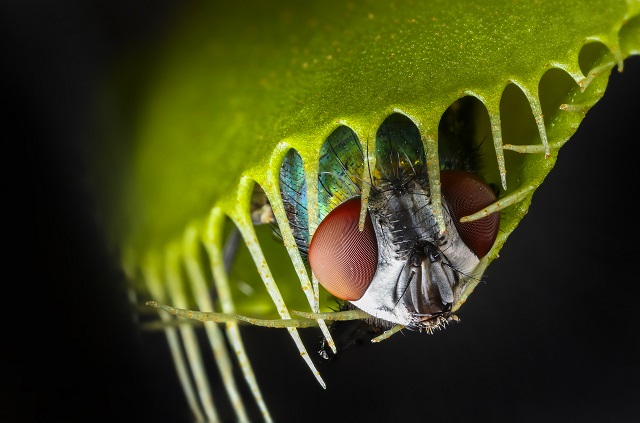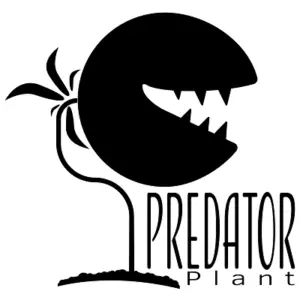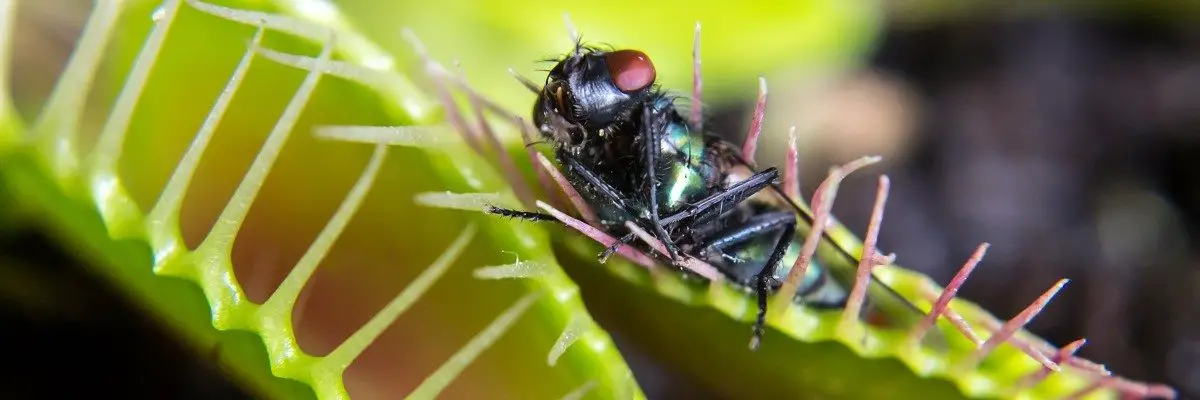Venus’ Flytraps collect nutrients from gases in the air and from the soil, just like other plants. Nevertheless, they live in poor soil and can benefit from insects for nutrition. Venus Flytraps are native to North and South Carolina’s boggy areas, but other plant species are found worldwide. The fascination with these plants led to their overcollection, which caused them to become endangered. Venus’ Flytraps are now mostly found in greenhouses.
There are stiff hairs on the leaves of Venus’ Flytrap, known as trigger hairs. Whenever something bends these hairs, the upper and lower lobes of leaves close shut, hopefully snaring whatever insect is inside. Within seconds, the trap is sealed. The trap sometimes doesn’t completely close at first. Some scientists believe that the flytraps stay open for a few moments to allow smaller insects to escape as they will not give enough nutrients compared to the larger ones.
How does a Venus flytrap know when to shut?
A hinge connecting the two lobes is located at the center of the leaf stalk. The nectar secreted by each lobe lures insects to the plant. Cilia hairs on each lobe will later appear like a cage to some unfortunate insect. As the lobes are curved out and stretched open, they resemble a clam. Three sensory hairs are present in each lobe. A raindrop, piece of wind debris, or insect bumping against those hairs causes the cells at the base of the hair to send out electrical signals. This, in turn, causes the electrical signals to spread.
An insect crawling along the lobe will likely bump into the sensory hairs several times. Only two bumps within 30-second intervals are required for the lobes to clamp shut, encasing the prey. What mechanism does the Venus flytrap determine the interval between these bumps? Scientists have long suspected calcium ions are involved.
Researchers genetically modified Venus flytraps so that they would fluoresce green when calcium ions were present in the leaf cells. Observing a green glow from stimulating sensory hairs, the scientists could determine the increased concentration of calcium ions directly. The trap snapped shut as soon as the calcium concentration reached a certain level.
After that, the concentration slowly declined. The calcium concentration subsequently rose again after a second stimulus. However, this threshold could be reached only if the two stimuli were delivered within 30 seconds of one another.
What happens to the insects once they are trapped?
An insect will inevitably touch the sensory hairs inside a closed trap when attempting to escape. Whenever the hairs are mechanically touched, a signal is released that travels in waves across the trap. A third signal causes the plant to produce the hormone jasmonate; following the fifth, the digestive glands within the traps that line the insides of the traps become active.
Their membranes increasingly produce liquid-filled bubbles (secretory vesicles) and release the contents into the air. This occurs both when sensory hairs are mechanically stimulated and when the glands come in contact with the hormone jasmonate. Calcium plays an important role in the process, which several proteins control.
As soon as the insect is caught inside the trap,
Fluid is secreted by digestive glands which are present on the interior portion of the plant’s leaves. During this process, bacteria and fungi are destroyed, parts of the insect are dissolved, and enzymes are used to dissolve the insect so that its core nutrients can be extracted.
After absorbing these nutrients into the leaf, the trap will reopen five to twelve days later to release the exoskeleton. Following three up to five meals, the trap will no longer catch prey and simply spend up to three months photosynthesizing before dying and dropping off the plant.
What Can You Feed and What Not Feed Your Venus flytrap?
A Venus flytrap’s diet should consist of bugs. A suitable choice would be small live insects containing many nutrients. Frozen insects are a good alternative as well. Please do not feed Venus flytraps human food.
Insects are not required for the survival of Venus flytraps. Consuming prey, however, provides the plant with additional nutrients that help it grow and multiply. Below are some of the insects a Venus Flytrap can eat.
| Flies | Ladybugs |
| Spiders | Beetles |
| Gnats | Cricket |
| Fruit flies | Ants |
| Mosquitos | Grasshoppers |
Whenever you are not offering food, don’t trigger the trap to close since a trap can only be opened or closed a few times in its lifetime. Make sure you don’t overfeed the plant. An insect or small slug every month during the growing season is adequate. Plants do not need food during their dormant period.
Can Venus flytraps eat dead insects?
Venus flytraps can be fed dead bugs. There can be some challenges to using dead bugs compared to live ones. Many types of dead bugs are available, including crickets, spiders, and flies. Venus flytraps will eat both dead and live insects. There is almost no difference in the nutrients in the two options. It is, however, less natural to consume dead insects. There will be a few extra steps you need to add to the feeding process in order to trick the plant into eating dead insects. Insects should be rehydrated with distilled or filtered water, for example.

Can Venus flytraps eat meat other than insects?
Venus flytraps consume mostly insects as their main food source in the wild. A Venus flytrap can digest the meat of rodents, birds, and frogs. Unfortunately, this is not a very common occurrence.
Venus flytraps should never be fed anything other than insects. While they can absorb meat, they will likely fail at eating the whole prey. This will result in an unpleasant rotting trap.
Do Venus Flytraps eat flies?
Sweet nectar attracts flies to Venus flytraps, which snares those flies with their traps. The flies then drown and are consumed by the enzymes. Venus flytraps consume flies in the wild.
Insects To Avoid Feeding Venus Flytraps?
Venus flytraps can consume insects of almost any kind. Some bugs, however, are not suitable for consumption. You should avoid the following bugs:
- Snails
- Bettles
Do not feed your Venus flytraps snails or beetles. The shell won’t be digestible by the plant.

